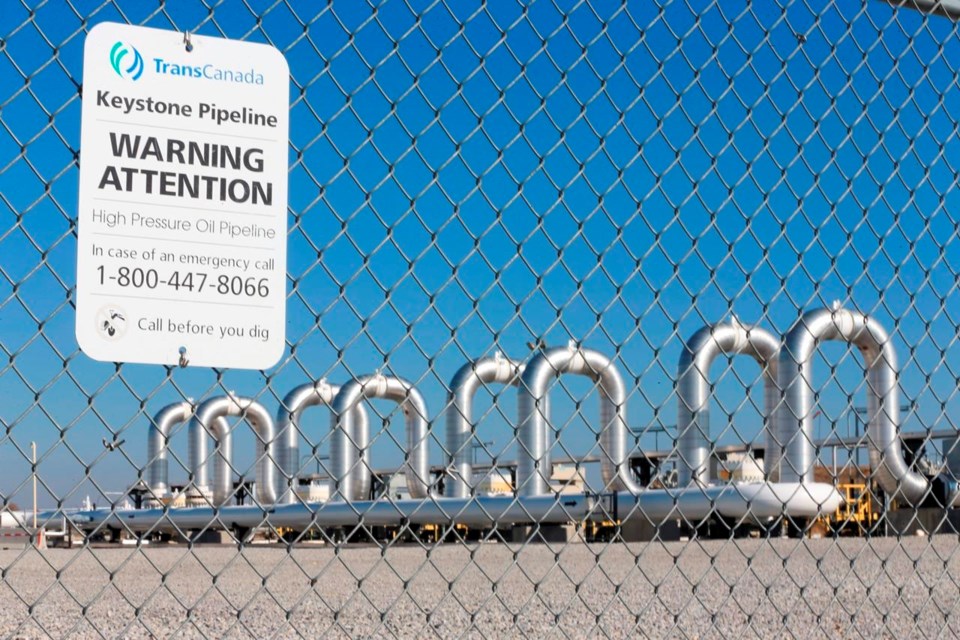CALGARY — A U.S. regulator has ordered TC Energy Corp. to lower the operating pressure on the entire Keystone pipeline system.
The Pipeline and Hazardous Materials Safety Administration issued the ruling Tuesday as a result of its ongoing investigation into a Dec. 7 leak that saw around 13,000 barrels of oil spill into a creek in Washington County, Kansas.
In its "amended corrective action order," the PHMSA essentially revokes TC Energy's special permit, dating back to 2007, which allowed the company to operate certain portions of the pipeline at a higher stress level — 80 per cent of its specified minimum yield strength — than would normally be allowed under U.S. regulations.
Tuesday's order restricts the entire Keystone pipeline to operate at no more than 72 per cent of its specified minimum yield strength.Â
Keystone was the only crude oil pipeline in the U.S. to have been granted such a special permit. However, the December leak has raised questions about the safety of the pipeline system.
The most recent oil spill was the worst in Keystone's history, and U.S. government data shows spills from the pipeline system have been increasing in severity in recent years, to the point that the Keystone's safety record is now worse than the U.S. average.
In issuing Tuesday's order, PHMSA associate administrator for pipeline safety Alan Mayberry wrote that there is a risk of additional spills caused by the same combination of factors that caused December's oil leak.
"TC Oil’s operating, maintenance, and/or integrity management programs may be inadequate to address the repetitious pattern of failures related to the original design, manufacture, and construction of Keystone pipeline," Mayberry said.
He added that continuing to operate the pipeline as normal, without corrective measures, "is or would be hazardous to life, property or the environment."
Last month, TC Energy said its own investigation into the leak determined the spill was a result of a number of factors, including bending stress on the pipe and a welding flaw.
The company said the welding flaw led to a crack that grew over time as a result of bending stress fatigue, leading to the leak.Â
In an emailed statement Wednesday, TC Energy said it is reviewing the amended corrective action order.Â
"Our commitment to the safe operations of our system is unwavering, and we will comply with the (order)," the company said.
TC Energy was able to restart most of the 4,324-kilometre Keystone pipeline system a week after the spill, but a 154-kilometre section running from just south of Steele City, Nebraska to Cushing, Oklahoma remained shut down until the end of December.
That smaller section has been operating at a reduced pressure since it reopened. But Tuesday's regulatory order means the entire Keystone pipeline system must now operate at a stress level of no more than 72 per cent of its specified minimum yield strength.
The U.S. regulator said Tuesday the new pressure restrictions will remain in place until TC Energy receives written approval from the PHMSA.
The regulator is also requiring the company to submit an independent analysis of the root cause of the pipeline failure, and to submit a mitigation plan for how it would handle a future spill, if one were to occur.
TC Energy said cleanup work at the site of the spill continues. The company has pegged the cost of remediation and cleanup at an estimated US$480 million.
This report by The Canadian Press was first published March 8, 2023.
Companies in this story: (TSX:TRP)
Amanda Stephenson, The Canadian Press
Note to readers: This is a corrected story. Previous version said specified maximum yield strength in paras 3 and 4.




